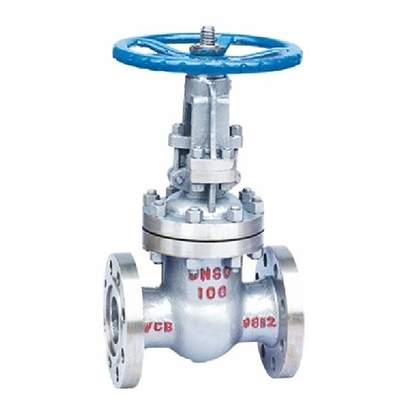Welcome to My Blog!
Before we dive into the content, I’d love for you to join me on my social media platforms where I share more insights, engage with the community, and post updates. Here’s how you can connect with me:
Facebook:https://www.facebook.com/profile.php?id=61563865935136
Now, let’s get started on our journey together. I hope you find the content here insightful, engaging, and valuable.
Introduction

In virtually every process industry—whether oil and gas, water treatment, power generation, or chemical processing—valves are the unsung heroes that keep operations flowing smoothly. Among them, the gate valve holds a special place due to its simple design, reliable shut-off capability, and broad pressure and temperature tolerances. Understanding the gate valve definition and its practical implications lies at the heart of optimizing system performance, safety, and lifecycle costs.
Many engineers and procurement professionals overlook the importance of defining a gate valve with precision, which often results in misapplication, inefficiency, and increased maintenance. By diving deep into the technical and functional aspects of this crucial component, this article aims to provide clarity and actionable insights for industrial users.
What Is a Gate Valve?
Gate Valve Definition and Basic Principle
A gate valve is a linear motion valve with a wedge-shaped disc (the “gate”) that moves up and down between two seats to start or stop flow. When the gate is fully raised, fluid flows freely; when lowered, it creates a tight seal that prevents medium passage. Unlike globe or ball valves—designed for throttling—gate valves are best suited for full-open or full-close applications, minimizing pressure drop and wear.
The simplicity of its operation makes it highly reliable in critical service conditions where tight shut-off is necessary. It is this straightforward yet robust mechanism that underpins the technical foundation of the gate valve definition.
Key Components in the Gate Valve Definition
To appreciate the full gate valve definition, let’s break down its primary parts:
- Body: The outer casing that houses all internal parts and connects to the pipeline.
- Bonnet: Houses the stem packing and provides access for maintenance.
- Gate (Disc): The movable barrier that blocks or allows flow.
- Seat Rings: Metal or resilient rings lining the body to ensure a leak-tight seal when the gate is closed.
- Stem: Transfers handwheel or actuator motion to the gate.
- Handwheel/Actuator: Manual or automated mechanism for operating the valve.
- Packing and Gland: Sealing elements around the stem to prevent external leakage.
Each of these components contributes to the valve’s overall functionality and must be carefully designed and manufactured to industry standards. Inaccuracies in any part can compromise the entire valve system.
Importance of Precise Gate Valve Definition in System Design
Accurate gate valve definition ensures engineers select the right valve for the job. Misunderstanding the term can lead to:
- Undersized Valves: Causing cavitation, vibration, and noise.
- Improper Materials: Leading to corrosion or erosion in aggressive fluids.
- Inadequate Sealing: Resulting in leaks, safety hazards, and regulatory non-compliance.
Beyond technical mismatches, incorrect definition can also lead to longer procurement cycles and costly revisions in the design stage. Properly defining the gate valve from the beginning ensures project efficiency, safety, and regulatory adherence.
How Gate Valve Definition Impacts Performance
Flow Characteristics
Gate valves, when fully open, present minimal obstruction. Their straight-through passage yields low pressure loss, which is why they’re favored in long-run pipelines and isolation duties.
Because they don’t disrupt the laminar flow of media, they are excellent choices for high-capacity fluid systems where maintaining consistent pressure and minimizing energy loss is critical.
Sealing and Leak-Tightness
A precise gate valve definition includes seat ring hardness and surface finish. Fanlei’s state-of-the-art machining ensures surface finishes below 0.4 µm Ra, delivering bubble-tight shut-off even under high differential pressures.
This kind of sealing performance is particularly important in applications dealing with hazardous fluids, where even small leaks can lead to significant environmental and safety risks.
Maintenance and Reliability
Because gate valves are designed for infrequent operation, understanding aspects like stem sleeve design, gland packing selection, and bonnet bolting torque standards is critical for ensuring long service life.
Operators benefit greatly from valves that are not only easy to maintain but also built to last for decades with minimal intervention, which is something Fanlei consistently delivers on through rigorous quality control.
Common Industrial Applications of Gate Valve Definition
- Oil & Gas Pipelines
- Power Plant Feedwater Systems
- Water Treatment & Distribution
- Chemical Processing Lines
- Mining Slurry Services
Each of these sectors demands specific adaptations of the gate valve, from material compatibility to actuation speed. A clear gate valve definition allows engineers to customize specifications to ensure safe and efficient operation under varying conditions.
Moreover, by understanding where and how gate valves are used, purchasers can make smarter investment decisions that align with both operational goals and long-term cost efficiency.
Mid-Article Table: Material & Rating Overview
| Material Grade | Pressure Class (ANSI) | Temperature Range | Typical Service |
|---|---|---|---|
| Carbon Steel (WCB) | 150–2500 | –29 °C to 425 °C | Water, Oil, Gas |
| Stainless Steel (CF8) | 150–600 | –46 °C to 550 °C | Corrosive Chemicals |
| Duplex Stainless (1.4462) | 150–900 | –46 °C to 400 °C | Chlorides, Sulfides |
| Alloy Steel (WC6/WC9) | 150–2500 | 0 °C to 650 °C | High-Temp Steam |
| Bronze/Brass | 150 | –10 °C to 200 °C | Low-pressure Water |
This reference table can serve as a starting point during specification reviews and helps eliminate guesswork in material selection during the design and procurement phases.
Manufacturing Gate Valves: From Definition to Delivery
At Fanlei, we integrate R&D, design, production, and sales to ensure every gate valve meets rigorous benchmarks:
- Design & Simulation: Finite element analysis validates stress distribution.
- Forging & Casting: High-grade alloys forged or cast per ASTM/EN standards.
- Machining: CNC turning and milling deliver tight tolerances.
- Assembly & Testing: Hydrostatic and seat leakage tests ensure conformity.
- Certification: ISO 9001, API 600, and CE marking for global compliance.
Our all-in-one capabilities eliminate reliance on third-party suppliers, ensuring tighter quality control and faster turnaround times. Fanlei’s commitment to excellence starts with your gate valve definition and doesn’t end until your product is in operation.
Maintenance Best Practices Based on Gate Valve Definition

- Regular Inspection: Check bonnet bolts, gland packing, and handwheel torque.
- Lubrication: Use compatible valve grease on stems and threads.
- Seat Ring Replacement: Monitor seat wear and reface or replace per service intervals.
- Pressure Testing: Conduct periodic hydrotests to detect seat leakage.
These best practices, when combined with a strong understanding of your gate valve’s specifications, will help you maximize reliability and reduce the risk of costly emergency maintenance.
Routine upkeep based on a clear gate valve definition can extend service life by years and maintain system integrity even in demanding environments.
Conclusion
A clear gate valve definition underpins optimal valve selection, reliable operation, and long-term cost savings. By mastering the nuances of materials, design standards, and performance criteria, engineers and maintenance teams can ensure their systems run safely and efficiently.
At Fanlei, our integrated R&D, manufacturing, and quality control processes guarantee that every valve we deliver embodies the precise gate valve definition you require. Whether you are engineering a new system or retrofitting an existing one, we are ready to help.
For expert guidance or custom solutions, contact us today and let Fanlei be your trusted partner in industrial valve excellence.
FAQ
What distinguishes a gate valve from a globe valve?
Gate valves provide minimal pressure drop in full-open position and are suited for on/off control, whereas globe valves offer finer throttling at the expense of higher pressure losses. Knowing the gate valve definition helps ensure the right valve is selected based on operational needs.
Can gate valves be used for throttling?
It is not recommended—partial opening can induce seat erosion, vibration, and unpredictable flow. For throttling, globe or butterfly valves are preferred. This aspect is an important part of the functional boundary in the gate valve definition.
What materials should I choose for corrosive applications?
Duplex stainless steels or high-nickel alloys, selected based on fluid composition, temperature, and pressure. Fanlei offers custom metallurgies to match your needs, and we can provide technical guidance to ensure longevity and safety.
